Ready to drive incremental growth with influencers?
If ditching the randomness of influencer campaigns and building a predictable, ROI-first influencer program sounds like a plan. Consider talking to our team!

Forensics
Discover the influencer strategy Purdy & Figg use to get content, ads, and customers without big upfront costs.
Contents
Purdy & Figg is a UK-based direct-to-consumer (DTC) brand that makes plant-based cleaning products.
In June 2025, they were named the 3rd fastest-growing company in the UK by The Sunday Times. In the year before that, they were 9th.
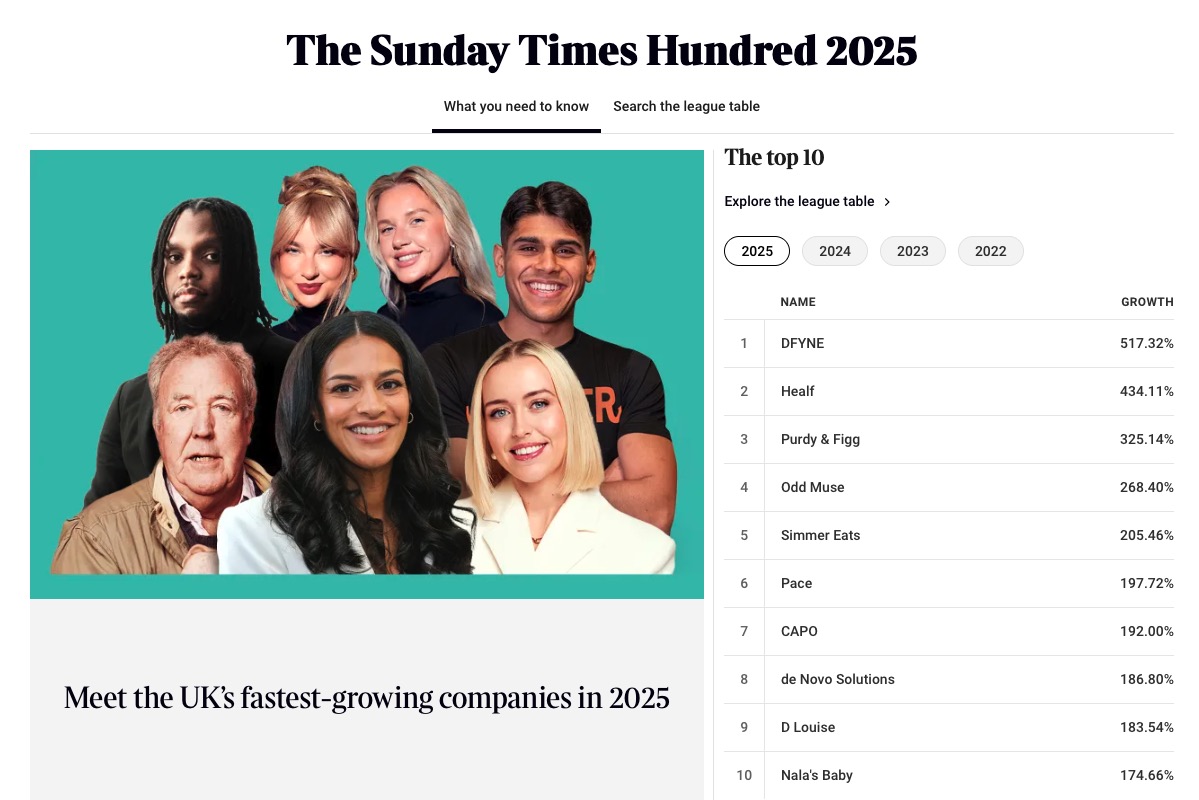
They’ve done it without burning money on paying influencers upfront, without retail shelves, and without chasing every short-term growth hack going.
Plenty of factors have fuelled that rise, but one of the most important — and the one we’ll break down here — is their influencer marketing approach.
Over time, this approach has evolved into a system that fuels their advertising, builds an affiliate network, and creates a community of creators who feel connected to the brand.
If you run a DTC brand and want a real-world example of influencer marketing that doesn't rely on upfront payments, this is worth reading.
Purdy & Figg’s influencer marketing strategy is all about product seeding — sending products to influencers for free, with no obligation to post.
Instead of paying upfront for content, they focus on making the unboxing and first experience so good, that people want to share it.

When seeding products, the choice can’t be random or just based on what you personally like. It has to be an objective decision. You need to look at factors like…
If the product is too expensive, it’s hard to make ROI on seeding. If it’s not something customers usually start with, you lower the chance of creators trying it and recommending it. The goal is to maximize success across all these factors.
That’s exactly what Purdy & Figg did by choosing their Counter Clean Starter Kit. It’s their flagship product. Most new customers try first, and it perfectly represents the brand. It’s also one of the cheapest for them to produce, which keeps seeding costs low while still giving creators a real sense of the product’s quality.
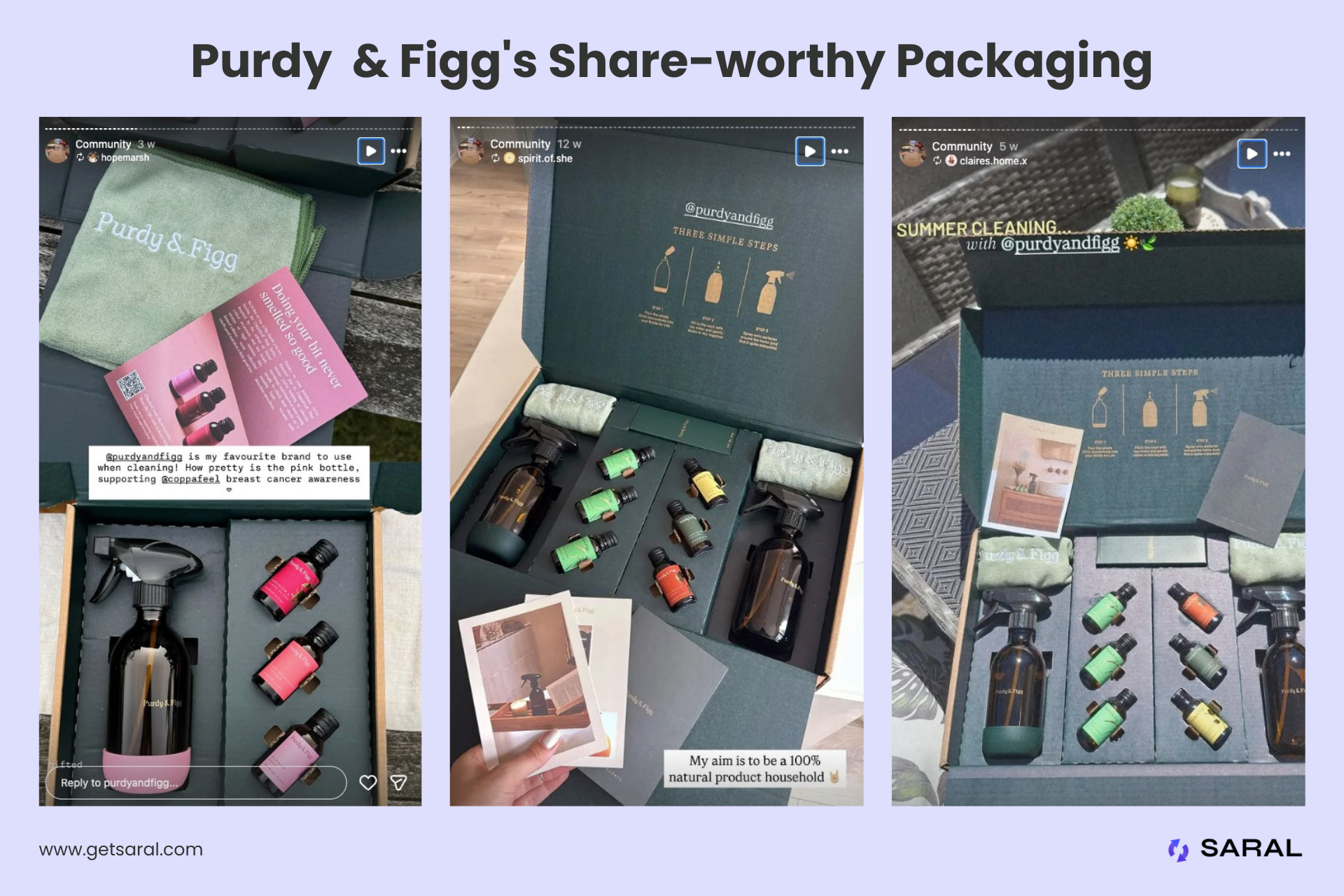
Every package goes out with a handwritten note or some personal touch, so it feels like a gift, not a cold PR drop.
When it comes to product seeding, who you send to matters just as much as what you send.
Purdy & Figg didn’t blast their products out to everyone. They chose influencers whose values match the brand. For them, that meant influencers who already cared about sustainability and reducing waste.
This matters because when a creator genuinely believes in the product’s mission, they don’t need $$$ or constant reminders to talk about it. Their post feels like a natural extension of what they already share with their audience, not a forced brand promotion.
And the numbers prove it.
Co-founder Jack Rubin shared that by sending products to the right people, their seeding campaigns produced nearly 4,000 pieces of content.
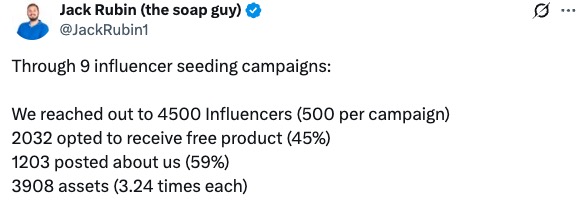
The posts then became the fuel for their paid ads.
Once Purdy & Figg have their stack of influencer posts from product seeding, the content doesn’t just sit on social media feeds.
They repurpose it to run as ads, testing each piece to see what actually brings in customers.
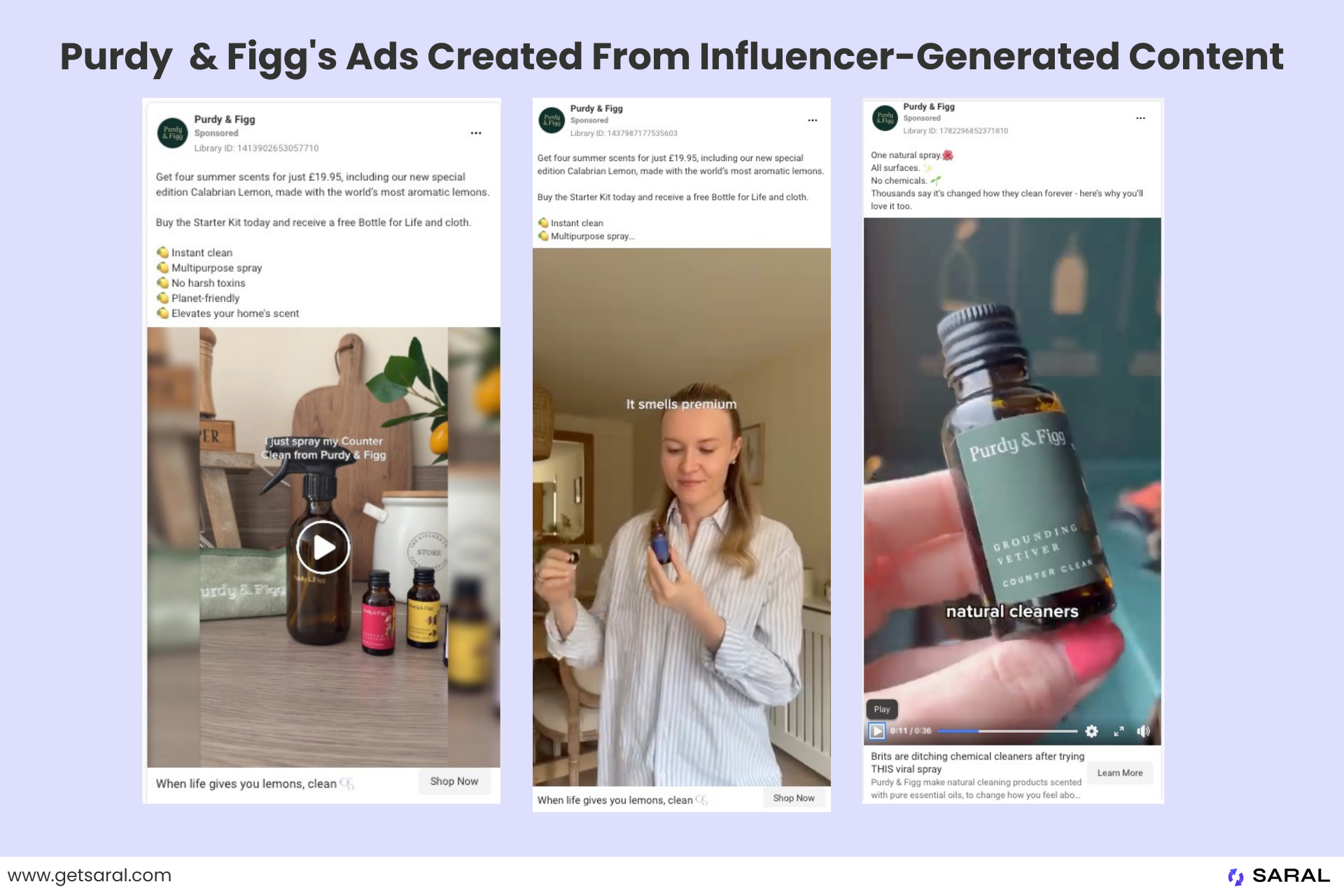
Nothing is ruled out based on personal opinion — as Jack Rubin shared in a tweet, some of the ads they thought looked “ugly” ended up being top performers.

They used to group assets into Dynamic Creative Testing campaigns on Meta. Since then, that feature’s gone from the Meta platform.
But the principle is still the same: keep rotating fresh creatives into the ad account and let the numbers decide.
If something hits the target CPA, it gets more spend.
If it doesn’t, it’s replaced with something new.
They don’t assume every influencer post will work as an ad.
Becca Harris, Influencer Marketing Manager at Otter Spirit, has seen the same thing in her ad campaigns:
“One thing we’ve noticed is that the kind of content that performs on influencers’ channels isn’t always the best fit for ads (too long, too personal, faceless, etc). That’s why we’re planning to move more into UGC collaborations in the future, where content can be tailored specifically for paid promotion.”
If Purdy & Figg tried to produce the same volume of content in-house or through an agency, it would require a huge team of videographers, editors, and copywriters, plus weeks of planning for each shoot.
Instead, influencer-generated content gives them hundreds of ready-to-use assets every month, covering different styles, hooks, and angles — all without the overhead of running a full-blown production studio.
Because they seed hundreds of influencers monthly, their creative library grows at a pace no internal team could match. That constant flow of real, diverse content keeps their ads competitive, avoids creative fatigue, and is a big reason they’ve been able to scale ad spend into the millions without letting CPA spiral.
Purdy & Figg pay close attention to how each piece of influencer content performs once it’s running as an ad.
When they spot creators whose videos consistently bring in sales, they don’t treat it as a one-off win.
They reach out again, share what’s been working, and ask for more content in that style. These top performers are also invited to join the brand’s affiliate program.
Purdy & Figg use their affiliate program to turn top-performing influencers from their seeding campaigns into long-term partners.
These creators get a unique code or link, and their audience gets a discount to encourage purchases. The creator earns a commission on each sale that comes through their code.

When deciding commission rates and discounts, keep your margins in mind so the program is profitable while still rewarding creators.
When most brands in the home cleaning space look for influencers, they start with the obvious choices — home organisers, cleaning influencers, or homemakers.
For the launch of their Summer Lawn scent, Purdy & Figg took a different approach.
The product was designed to smell like freshly cut grass.
To bring that to life, they reached out to gardeners and nature-focused creators. These influencers could convey the feeling of the scent with genuine enthusiasm.
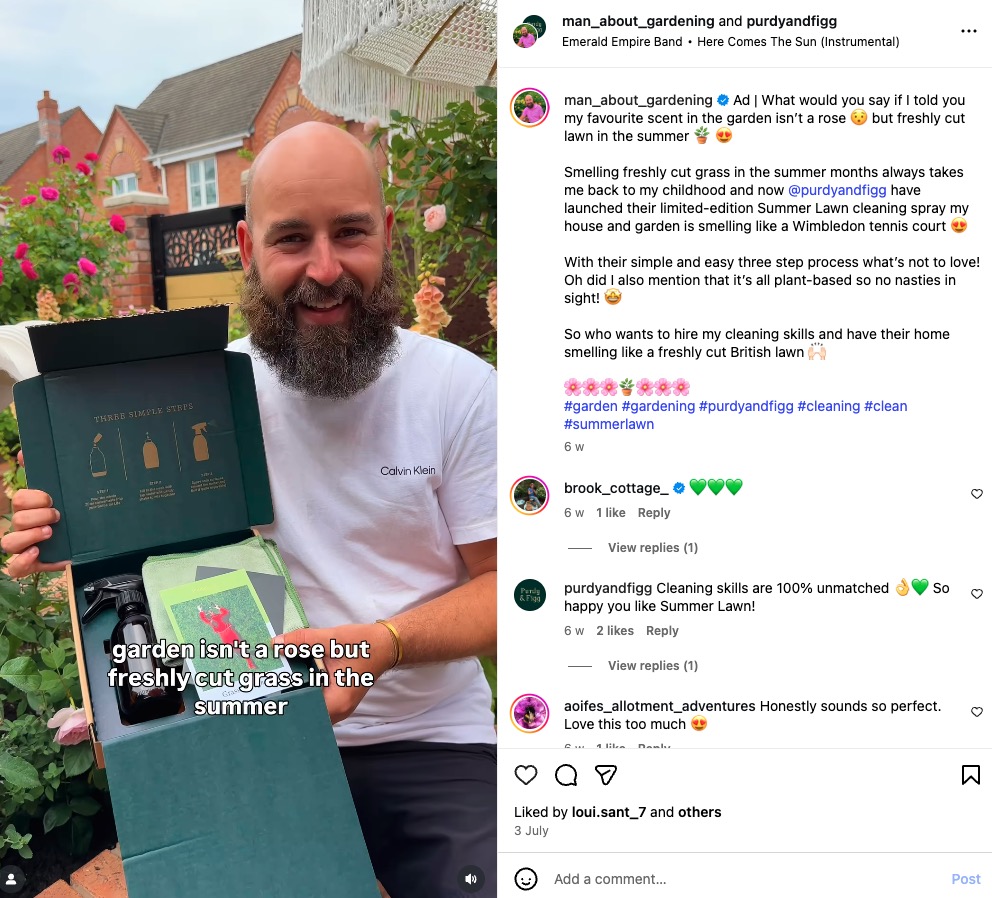
Their audiences already appreciate the smells of nature — cut grass, blooming flowers, damp earth — so the connection felt natural and relevant.
This was especially important because one of the hardest things to sell online is a smell. You can’t transmit it through a screen, so you have to rely on imagery, language, and atmosphere to make people imagine it.
The gardener content did exactly that. Their videos were filmed in lush green lawns or colourful gardens, with storytelling that made viewers almost “smell” it through the screen.
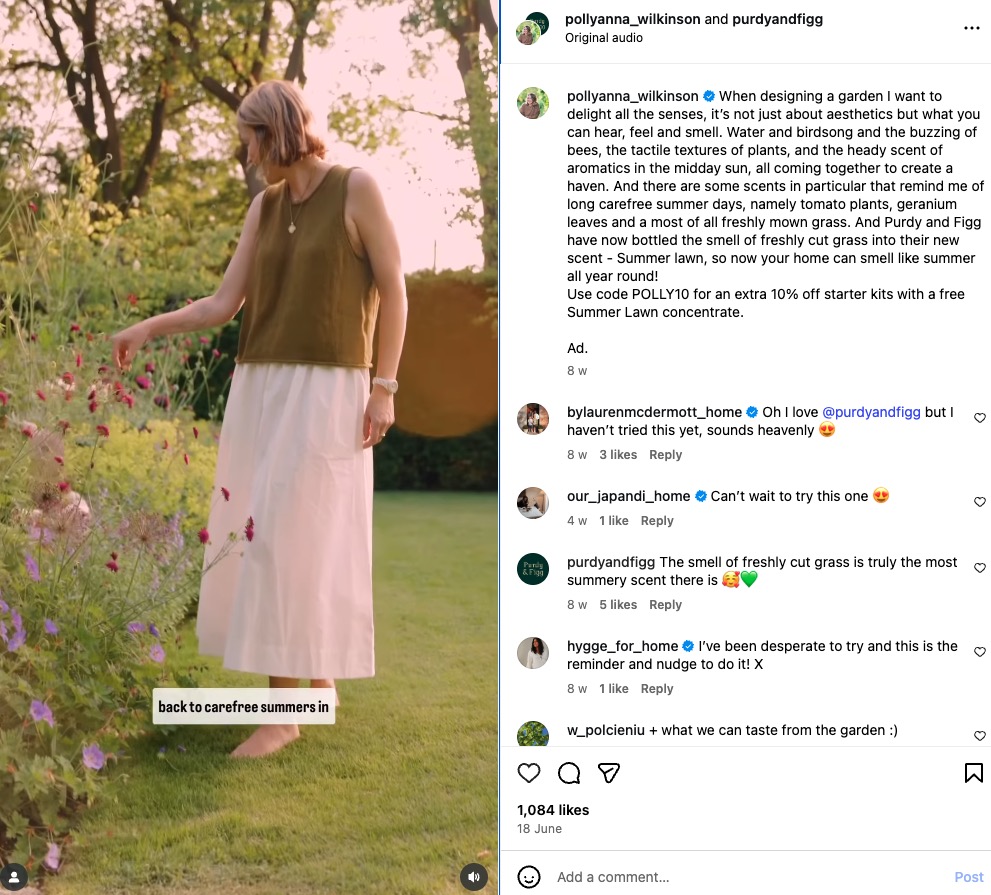
The takeaway is to think about who else could credibly connect with your product beyond the obvious niche.
Here's a quick playbook for brainstorming lateral influencer fits:
A brand selling coffee might work with travel photographers to show coffee as part of a morning ritual. A skincare company could partner with outdoor influencers to talk about sun protection on hikes.
By looking laterally, you tap into audiences that haven’t been saturated with similar promotions and bring fresh creative angles into your content library.
While Purdy & Figg actively reach out to influencers, they also make it easy for creators to approach them.
Their ambassador program has a simple landing page explaining the perks:
It’s straightforward, not overloaded with information, but enough to make the offer clear.
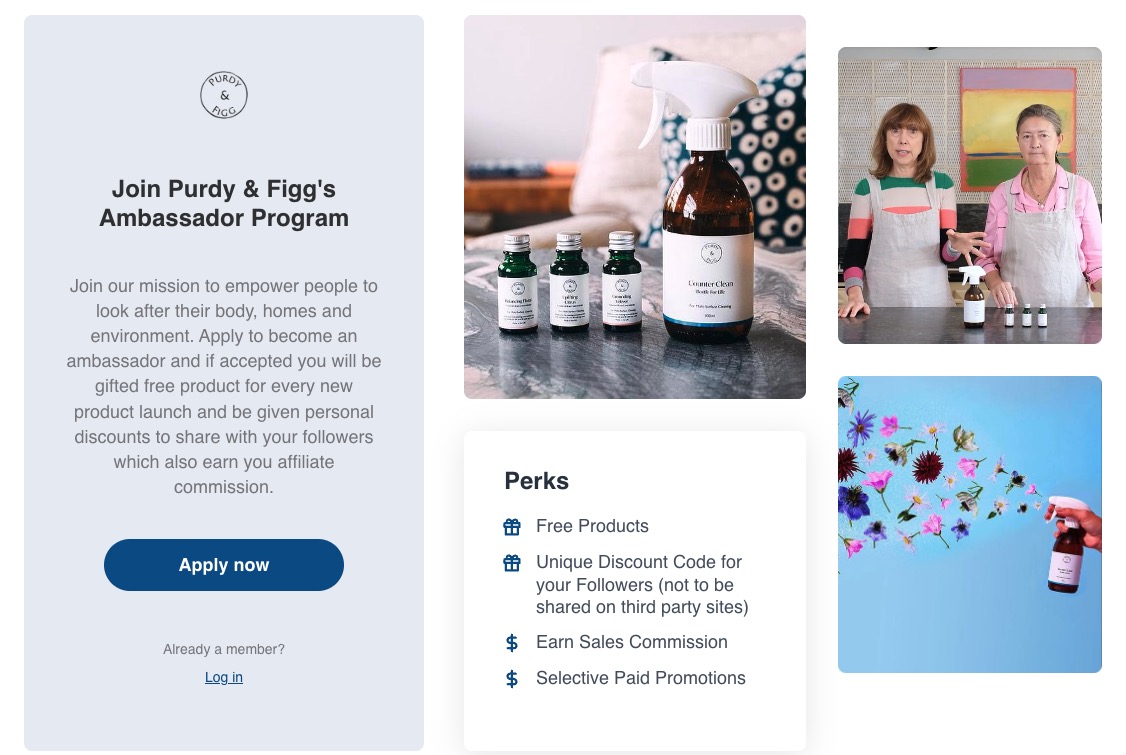
The application form is just as simple.
It asks why the creator wants to join, what kind of collaborations they’re open to, and links to their social accounts. This keeps the barrier to entry low while giving Purdy & Figg the basic info they need to decide if someone is a good fit.
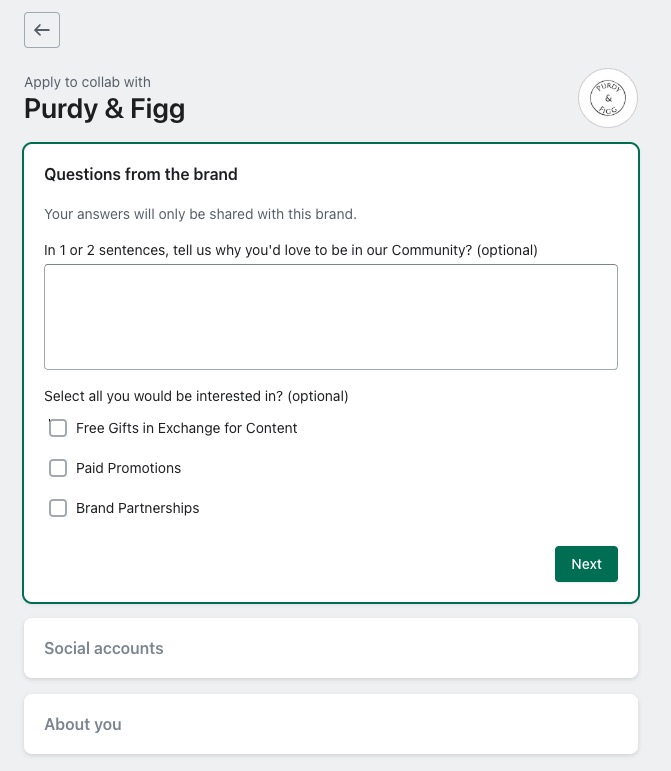
Having this setup means they capture opportunities they might otherwise miss — influencers who already love the brand but don’t know who to contact, or talented creators they haven’t found yet.
Purdy & Figg don’t treat influencer collaborations as one-off transactions. They put effort into building an ongoing relationship with the people who create content for them.
On Instagram, they regularly reshare creator's content, and collaborate on posts.
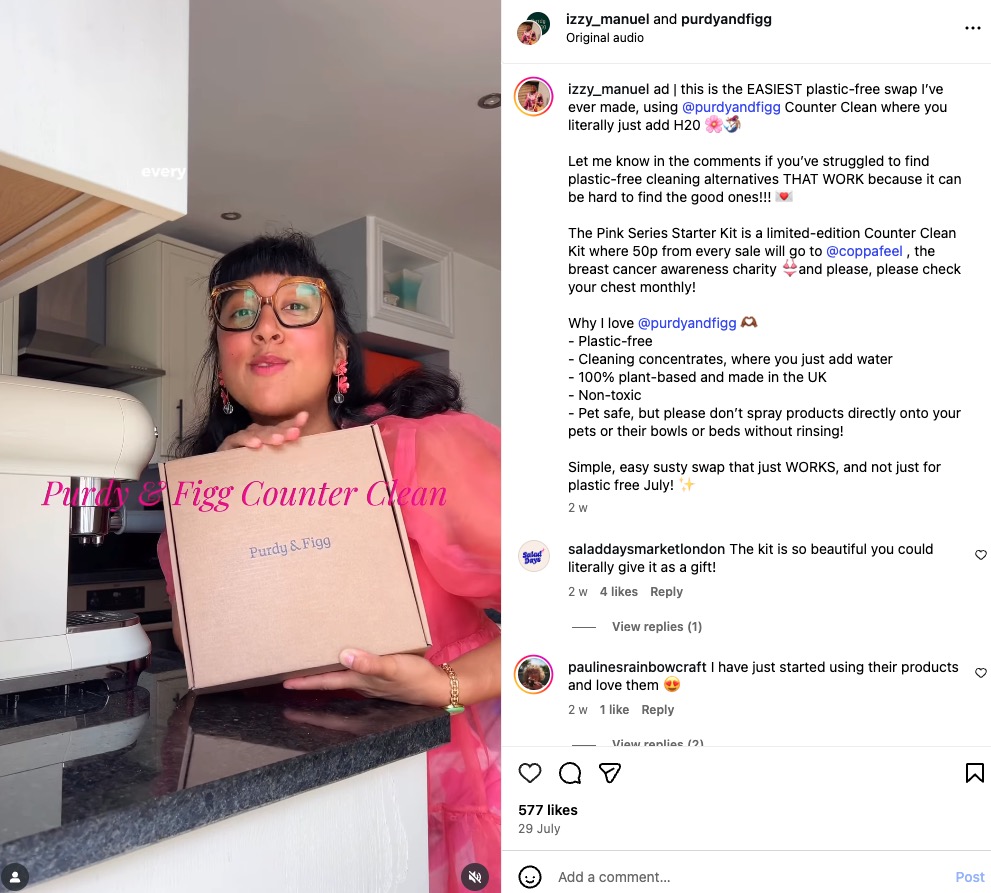
…and even feature influencer-generated images and videos on their website.
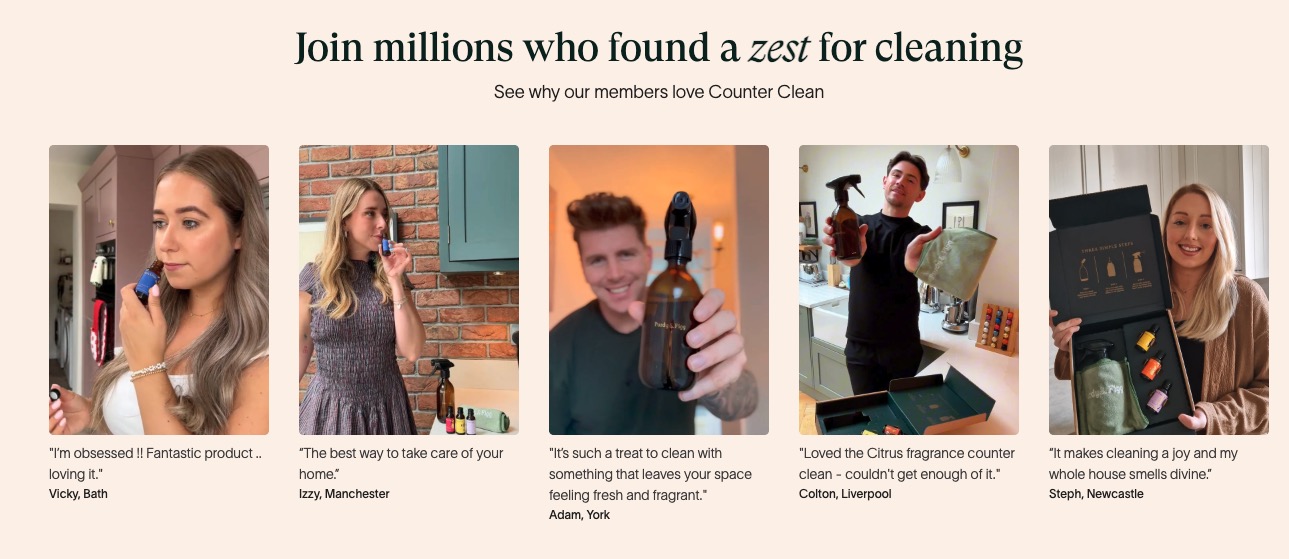
There’s a dedicated “Community” highlight where they save these stories so the creators’ work lives on beyond the 24-hour window.
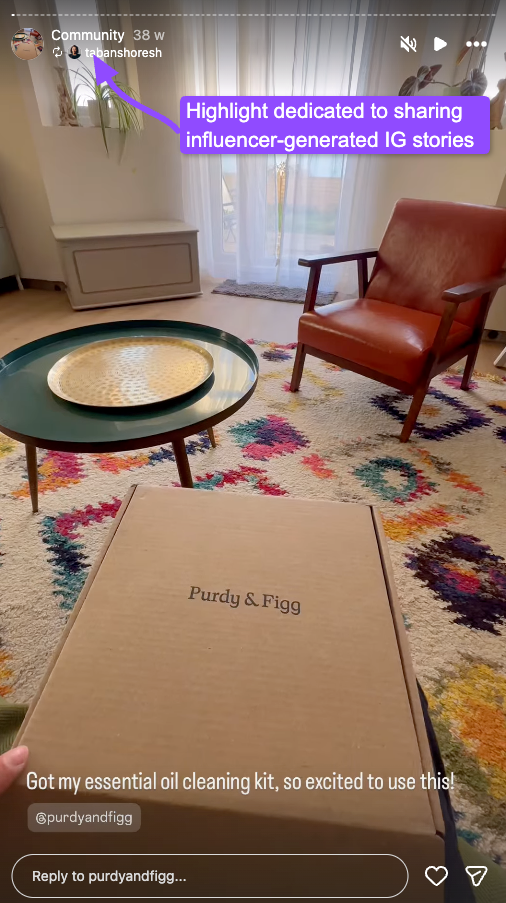
This approach does two things.
That recognition helps strengthen relationships.
Creators are more likely to keep working with a brand when they feel like part of its story, not just a supplier of content. Over time, this kind of engagement turns a loose network of influencers into a real community — one where creators are invested in the brand’s success because they’re visible in its marketing and culture.
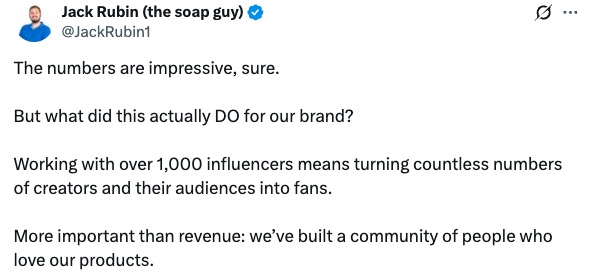
If you want long-term creator loyalty, make them feel seen and celebrated. A simple reshare, tag, or website feature can go a long way toward building that connection.
What makes Purdy & Figg’s approach work at scale isn’t just the idea, it’s the way they’ve set themselves up behind the scenes.
Most brands can start with a spreadsheet, a bit of manual tracking, and some extra hands. But sooner or later the bottleneck won't be who you hire or which influencers you reach out to, it'll be the systems you’re relying on.
That doesn’t need to be the thing holding you back.
You need tools like SARAL — an all-in-one influencer marketing platform built specifically for DTC brands. If you’re curious what SARAL can do for you, here’s where you can book a demo.
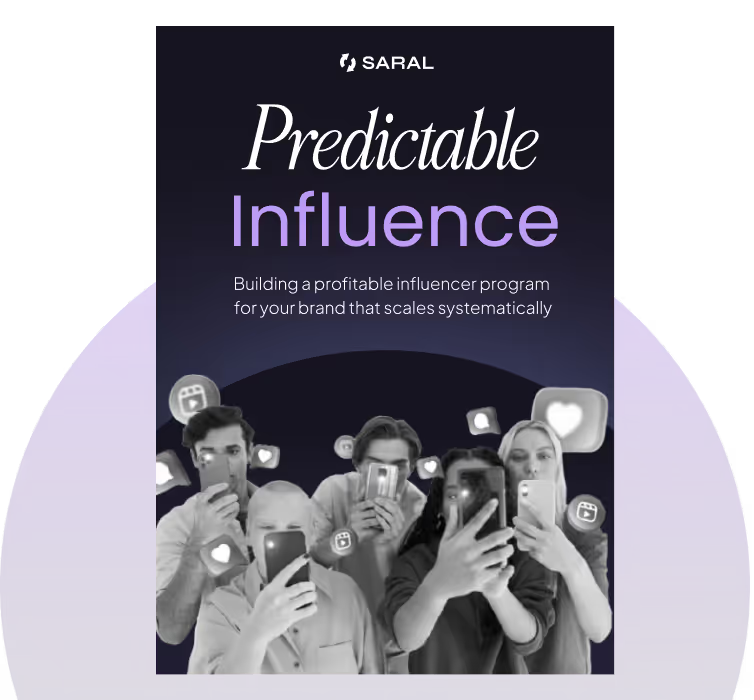
Sign up for a 7-day email course on the unique "Predictable Influence" strategy used by top brands like Grüns, Obvi, Tabs Chocolate.

If ditching the randomness of influencer campaigns and building a predictable, ROI-first influencer program sounds like a plan. Consider talking to our team!